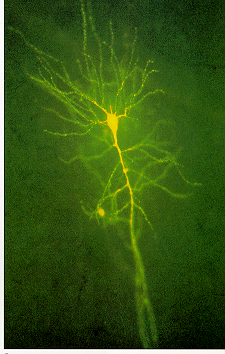Difference between revisions of "Artificial Neural Networks"
| Line 9: | Line 9: | ||
1. Research & Development: Mathimaticians, Psychologists, Neurosurgeons,... | 1. Research & Development: Mathimaticians, Psychologists, Neurosurgeons,... | ||
2. Applications using artificial neural networks (e.g. sales forecasting, data validation, etc from NeuroDimension) | 2. Applications using artificial neural networks (e.g. sales forecasting, data validation, etc from NeuroDimension). | ||
3. Funding from international institutes such as IST | 3. Funding from international institutes such as IST. | ||
4. New technologies that enable profound research of the human brain activity. | |||
==Inhibitors:== | ==Inhibitors:== | ||
Revision as of 23:21, 30 November 2004
Description:
Artificial Neural Networks (ANNs) are information processing models that are inspired by the way biological nervous systems, such as the brain, process information. The models are composed of a large number of highly interconnected processing elements (neurones) working together to solve specific problems. ANNs, like people, learn by example. Contrary to conventional computers -that can only solve problems if the set of instructions or algorithms are known- ANNs are very flexible, powerfull and trainable. Conventional computers and neural networks are complementary: a large number of tasks require the combination of a learning approach and a set of instructions. Mostly, the conventional computer is used to supervise the neural network.
For more information: http://en.wikipedia.org/wiki/Neural_network
Enablers:
1. Research & Development: Mathimaticians, Psychologists, Neurosurgeons,...
2. Applications using artificial neural networks (e.g. sales forecasting, data validation, etc from NeuroDimension).
3. Funding from international institutes such as IST.
4. New technologies that enable profound research of the human brain activity.
Inhibitors:
1. Outcome ethical issues: Is there a danger developing technologies that might perform similar (thinking) functions as the human brain?
2. Research ethical issues: Is it ethical to perform research and do experiments on the human brain and its functions?
Paradigms:
Experts:
Timing:
1933: the psychologist Edward Thorndike suggests that human learning consists in the strengthening of some (then unknown) property of neurons.
1943: the first artificial neuron was produced by the neurophysiologist Warren McCulloch and the logician Walter Pits.
1949: psychologist Donald Hebb suggests that a strengthening of the connections between neurons in the brain accounts for learning.
1954: the first computer simulations of small neural networks at MIT (Belmont Farley and Wesley Clark).
1958: Rosenblatt designed and developed the Perceptron, the first neuron with three layers.
1969: Minsky and Papert generalised the limitations of single layer Perceptrons to multilayered systems (e.g. the XOR function is not possible with a 2-layer Perceptron)
1986: David Rumelhart & James McClelland train a network of 920 artificial neurons to form the past tenses of English verbs (University of California at San Diego).
Web Resources:
1. http://www.doc.ic.ac.uk/~nd/surprise_96/journal/vol4/cs11/report.html
